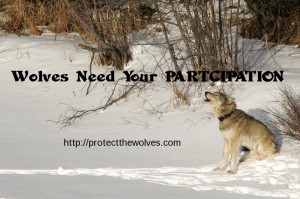
The Terrible Killing of OR 7s Dad OR4 and his Pack are the Types of Wolves that Protect The Wolves Religious rights could Potentially keep from being Slaughtered…. Protect The Wolves would rather that the Wolves were not taken out of the wild, but rather than Let State Fish and Game Departments Kill Wolves at the request of Ranchers…. Protect The Wolves desires to step in and Apply for The So-called Problem wolves that will be killed anyway at the hands of Ranchers…. Make a Difference for Wolves that need serious Help Today by Supporting the best viable option that they have. http://gofundme.com/protectthewolves If we fail to act on this…. it is on US… We see that… So we will Howl even Louder to help Protect The Wolves.
Read more about A Famous Wolf below, OR4 :
Four wolves were shot and killed by wildlife officials Thursday afternoon in northeast Oregon, bringing to an end a weeklong spate of violence between the Imnaha Pack and two livestock operations.
The wolves made five attacks on livestock this month, including four in the past week, which resulted in the death of two sheep and four cattle, state biologists said.
The Oregon Department of Fish and Wildlife classified the situation as “chronic livestock depredation” and authorized the killing of alpha male OR-4, alpha female OR-39 and two younger wolves.
“This was a very unfortunate situation for everybody involved,” said Russ Morgan, ODFW wolf coordinator, in phone interview. “As wildlife managers, we have to strike a balance between conserving wolves and minimizing impacts on livestock. This action wasn’t easy, but we felt it was the correct decision under these circumstances.”
The department last took lethal action against wolves in 2011, when two wolves, also from the Imnaha Pack, were killed by Fish and Wildlife officials. In 2009, state officials killed two wolves known as the Keating Pair.
Environmental groups reacted to the news with a mixture of sadness and anger.
OR-4 was a longtime breeding male and the father of OR-7, who made international headlines by becoming the first wolf to reach Oregon’s Cascade Range since the 1940s and the first to reach California in 90 years.
“This is a particularly difficult day as OR-4 has sired an incredible number wolf pups over the years, which has fueled wolf recovery across the state,” said Josh Laughlin, executive director of Cascadia Wildlands. “His role and that of the other three wolves should be celebrated and remembered.”
Groups that support ranchers called the move a “necessary but undesirable outcome,” pointing out that the rancher lost four yearling cattle within a month’s span.
“It’s an unfair situation for the livestock owners and the wolves themselves,” said Enterprise rancher Todd Nash, a spokesman for the Oregon Cattlemen’s Association. “Wolves are doing what they naturally do, but have been put in a situation where they are going to be in constant conflict with livestock and hunter’s game.”
A series of attacks that began March 9 led to the state’s decision. State biologists tracked the wolves as they settled in the Upper Swamp Creek Area near two livestock operations. It was a change in travel pattern by the four wolves, likely brought on by a rupture in the Imnaha Pack dominance structure, said Morgan.
OR-4 was 10 years old — most wild wolves only live four or five years — and his mate OR-39 has been limping for a few years. They were traveling with two younger wolves, likely offspring, away from the rest of the pack.
“You have older wolves in less than optimal condition, and that could manifest into them seeking out more vulnerable prey,” Morgan said. “They were settled in an area with lots of young, roaming livestock that are a lot easier to take than other animals.”
Whatever the reason, the shift resulted in attacks on livestock on March 25, two on March28 and another on March 30.
Given the frequency of the attacks, Morgan said, more incidents were likely.
“Even more cattle and sheep will be on these lands soon as calving and lambing season continues,” he said, “That increases the risk for even more losses from this group of depredating wolves.”
One of the questions raised by the environmental group Oregon Wild was whether livestock operators provided enough non-lethal deterrence measures, as required by law.
Oregon Wild spokesman Arran Robertson said representatives of the group found cow carcasses and skeletons near the area where the attacks occurred — seen from the road — that might have attracted the wolves. He added that they didn’t see any non-lethal deterrence measures.
Morgan said the operators did make a good-faith effort to use non-lethal deterrence measures and that ODFW officials never saw any carcasses that would “act as attractants” for wolves.
“It gets back to the ambiguity of the wolf management plan right now and what non-lethal steps must be taken to get to this point,” Robertson said. “We don’t have confidence, under the current management plan, that the non-lethal steps taken (or claimed to have been taken), are sufficient.”
Despite the loss of these four wolves, Morgan said, Oregon’s wolf population would continue to increase. Wolf population grew by 36 percent in 2015 to an estimated 110 animals.
“Losing these wolves, in this situation, is very tough,” Morgan said. “But Oregon’s wolf population is still healthy and is still going to grow in every part in every state.”
